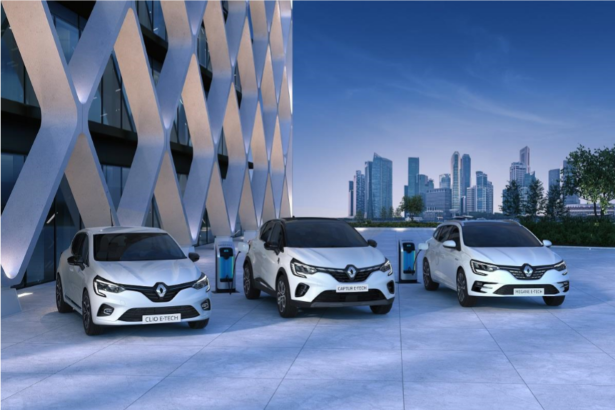
Renault Hybrids: Clio E-Tech, Captur E-Tech & Megane E-Tech
Imagine driving to work and back again in the afternoon, without using petrol. Yet being able to go away for the weekend without worrying about charging your battery. Welcome to the world of the hybrid.
Renault’s electrified vehicle strategy was boosted when it recently launched low-emission hybrids of its two best-selling cars. The full-hybrid Clio and plug-in hybrid Captur were showcased at the Brussels auto show on Thursday. Both use versions of Renault’s E-TECH drives.
A full-hybrid car uses a petrol engine as the primary source and to charge the small battery. This battery is also charged during braking or deceleration. A plug-in hybrid has the same setup but has a bigger battery that can be charged externally. The two systems trade off the weight and cost of the bigger battery against lower emissions and petrol-free urban driving.
The two hybrids are part of Renault’s plans to have eight full-electric and twelve hybrids in its range by 2022. Both cars are expected to go on sale in May.
Smaller cars such as the Clio hatchback and Captur SUV are rarely seen in hybrid form, but carmakers are scrambling to develop lower-emission models. European fleet standards for 2020/21 are set at a tough 95g/km. The Clio hybrid will have emissions below 100g/km, while the Captur plug-in will emit only 32g/km.
Renault said the Clio could do 80% of all urban driving on its battery power alone, with fuel efficiency improved by 40% compared to the conventional engined models. This hybrid produces 104kW and has a 230-volt, 1.2kWh battery.
The Captur plug-in version of E-TECH gives 120kW and uses a 400-volt, 9.8kWh battery. This gives you 50km of mixed-use range at a top speed of 135km/h. Most urban commuters drive much less than 50km per day.
Renault’s E-TECH drivetrain has two electric motors mounted to a special clutchless transmission. This technology has resulted in more than 150 new patents for the company. One of the motors is a small starter/alternator that starts the car in electric mode, while the other is larger and is used to power the wheels.
Primary power is provided by a 1.6-litre four-cylinder petrol engine that produces 68kW. Regenerative braking helps to charge the battery.
The Clio and Captur are by far the most popular Renault models in Europe, making up about half the 1 million vehicles sold there per year. The company will also launch the plug-in hybrid Megane later in the year. Pricing has not been announced yet, but the cost of electrified cars have steadily come down.
These hybrids will probably only reach us much later, but in the meantime, you can have a look at the range of popular Renaults that are available in South Africa.

